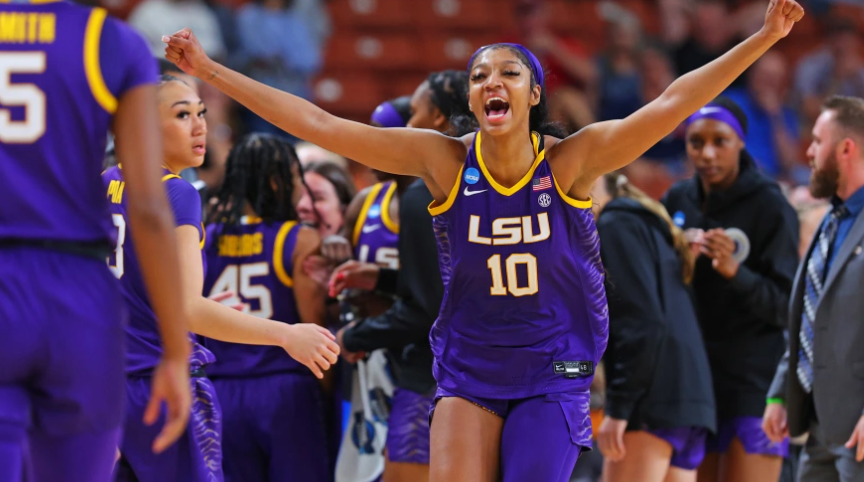How Women’s Sports Don’t Receive as Much Attention as Men’s Sports
If you’re a basketball fan, you’ve most likely been watching March Madness lately. Wins, losses, and highlights fill the headlines of news articles, and Google even shows you the whole schedule when you search it up. But what about the Women’s March Madness Tournament?
Ever since sports have been televised, men’s sports, both professional and school sports, often get more viewership, media coverage, and popularity than women’s sports. This discrimination is particularly significant in women’s team sports, such as basketball and soccer. In truth, elite female athletes are simply not equal to their male counterparts in terms of physical ability; something important to an athlete, unlike in other professions. Women don’t have the same muscle mass, wingspan, or stride length. It’s a physiological difference that’s impossible to ignore.
Viewership in women’s individual sports, particularly in the Olympics, reaches a similar viewership to the men’s. Sports like skiing, gymnastics, and tennis highlight women’s unique strengths, and the viewer’s frame of reference compares female athletes to other female athletes. But when women’s and men’s team sports- like basketball- are compared back-to-back, of course the men’s game will be more fast paced because of their greater physical ability. However, it’s difficult to pinpoint what exactly is the reason women’s team sports don’t get the same viewership and coverage.
The WNBA, for example, is subsidized by the NBA because it doesn’t turn a profit. This lack of profit stemming from a lack of viewership, which itself stems from a lack of coverage, is a vicious feedback loop that began when the association was founded in 1996 as a counterpart to the men’s. The NBA, however, was founded in 1946. Along with misconceptions in skill level and male fans arguing about whether women’s basketball is “less exciting” than men’s basketball, it’s no wonder women’s basketball wasn’t as popular. Pay discrepancy is a byproduct of the coverage cycle, with WNBA players earning an average of $72,000 a year compared to NBA players earning $4,500,000.
However, women’s basketball has been getting more recognition, and the future is increasingly bright. According to the Queen Ballers’ Club, a basketball journal which emphasizes women’s basketball, the 2019 season saw a 200% increase in viewership during the regular season and the 2020 season saw a 51% increase in viewership. WNBA revenue has also been estimated as $70 million in 2019.
Women’s volleyball wins fewer quick points than men due to differences in arm strength, so digging becomes essential to victory for women. With the ball in play longer, these rallies can get really amazing:
According to a study by sports analyst Dan Peterson, male soccer athletes fake twice as many injuries as women do, take almost 10 seconds longer to get off the field, and stay down 30 seconds longer when injured.
Ultimately, women’s sports are full of misconceptions, and evidence has shown that women’s sports aren’t comparable to men’s in terms of ability and pace. The problem is that many fans don’t want to get out of their comfort zone and watch the women. But women’s sports are on the rise, and viewership is growing. So try watching the men’s and women’s side of the sport next time you turn on the TV.

Howdy there! My name is Sophia Zeng and I'm a freshman at Hidden Valley High School. This is my first year in Journalism. I've always loved writing, and...











